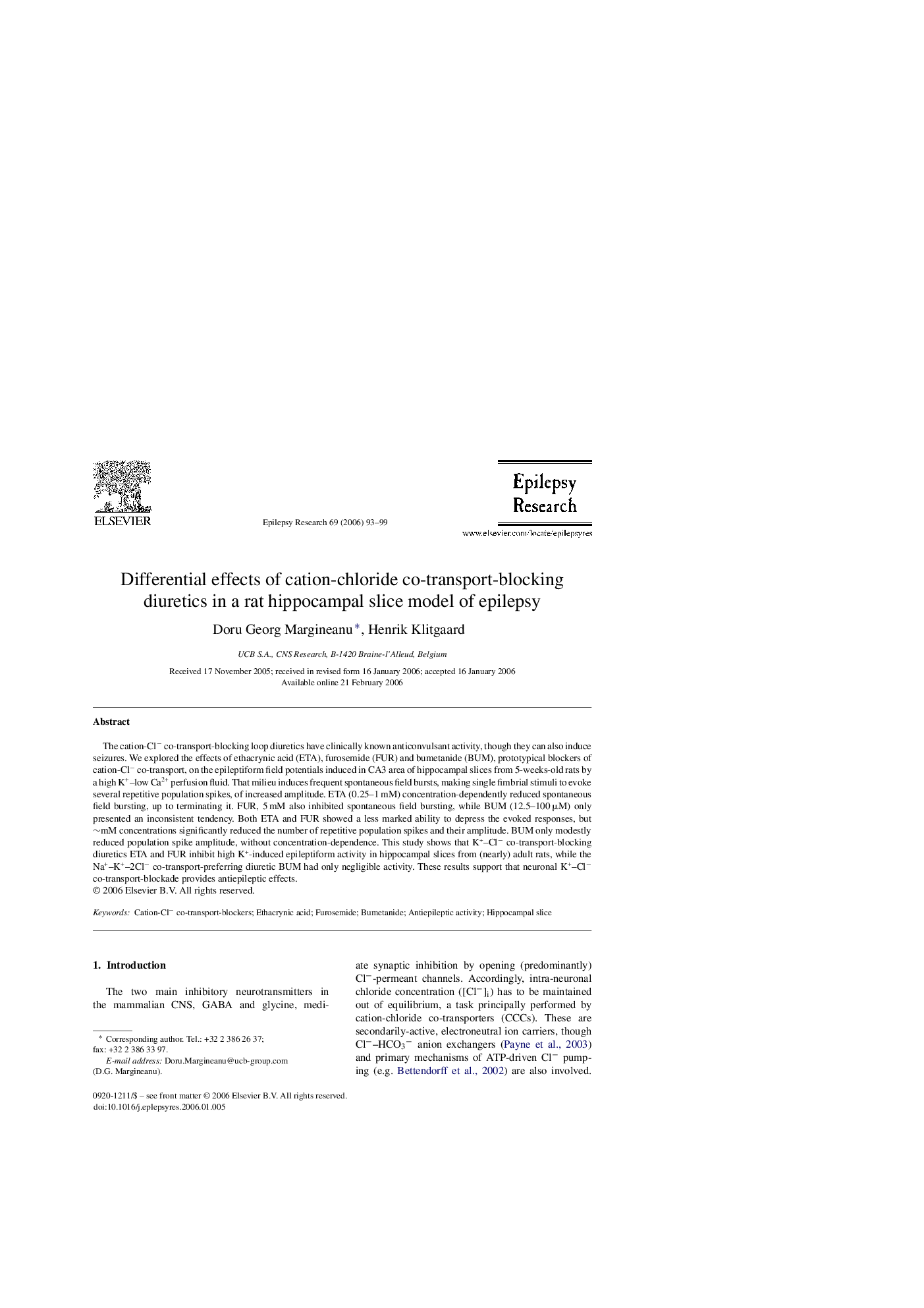| Article ID | Journal | Published Year | Pages | File Type |
|---|---|---|---|---|
| 3053396 | Epilepsy Research | 2006 | 7 Pages |
The cation-Cl− co-transport-blocking loop diuretics have clinically known anticonvulsant activity, though they can also induce seizures. We explored the effects of ethacrynic acid (ETA), furosemide (FUR) and bumetanide (BUM), prototypical blockers of cation-Cl− co-transport, on the epileptiform field potentials induced in CA3 area of hippocampal slices from 5-weeks-old rats by a high K+–low Ca2+ perfusion fluid. That milieu induces frequent spontaneous field bursts, making single fimbrial stimuli to evoke several repetitive population spikes, of increased amplitude. ETA (0.25–1 mM) concentration-dependently reduced spontaneous field bursting, up to terminating it. FUR, 5 mM also inhibited spontaneous field bursting, while BUM (12.5–100 μM) only presented an inconsistent tendency. Both ETA and FUR showed a less marked ability to depress the evoked responses, but ∼mM concentrations significantly reduced the number of repetitive population spikes and their amplitude. BUM only modestly reduced population spike amplitude, without concentration-dependence. This study shows that K+–Cl− co-transport-blocking diuretics ETA and FUR inhibit high K+-induced epileptiform activity in hippocampal slices from (nearly) adult rats, while the Na+–K+–2Cl− co-transport-preferring diuretic BUM had only negligible activity. These results support that neuronal K+–Cl− co-transport-blockade provides antiepileptic effects.
